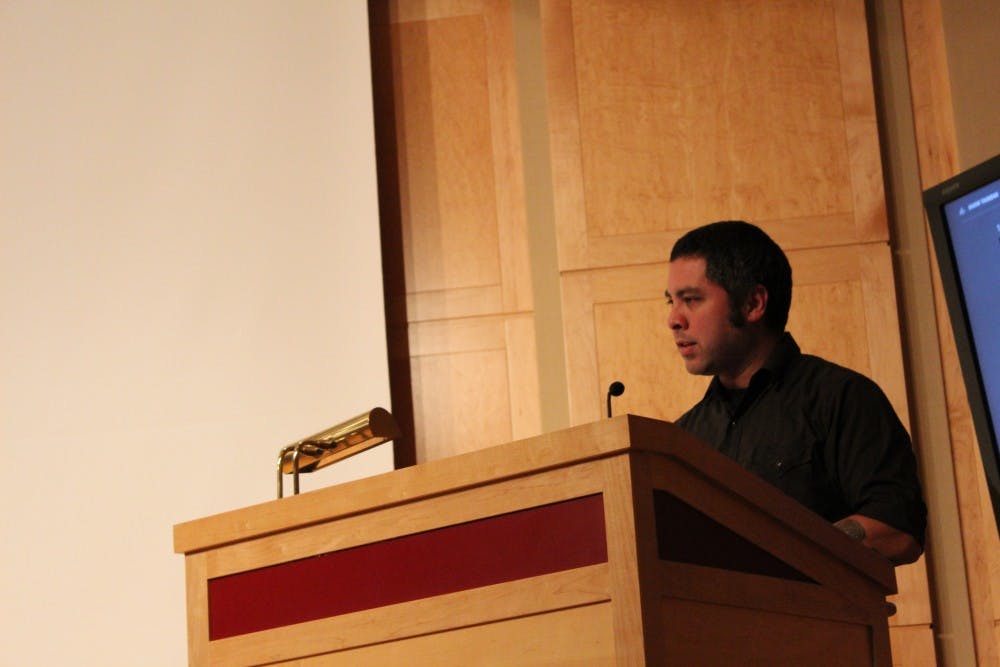Jason De León speaks on his time with human smugglers across Mexico
Jose León witnessed deportations, drug use, beatings and other violent scenes, but he also witnessed a side of migrants that was human and realistic.
León spoke on his experience photographing smugglers in Mexico on March 28 in the Charles V. Park Library Auditorium.
“I have learned to be afraid of those who don’t talk, but stare at me,” he said.
Painting a story of his experience photographing migrants, León said he tried to see what life was really like. Many of his subjects were involved in human trafficking and drug trafficking.
León chose to photograph this subject because he was inspired by other photographers.
“There are somethings that can not be conveyed in text," he said. "I am not a journalist, I want you to know that I was there and my uncomfortable presence was felt."
The photos, León said, are the way they are because of him. To prepare for his journey, he studied photography and as León said “did the opposite”.
“Rarely do ethnographers give people the opportunity to look back at the camera,” he said.
Making migrants more human allowed him to find common ground with people migrating, León said. It also allowed viewers to form a connection with them.
Swanton, Ohio senior Kayla Volz said as an anthropologist, she doesn't usually take photographs of the subject's faces.
"We want to keep them private," Volz said. "It is nice to see him break that mold.”
Chino, one of León’s subjects, was a 20-year-old soldier who had been moving across Mexico. He had tried to cross the U.S.-Mexico border five times. He was caught in a 7-11 in Texas the time he made it across.
“I struggle with how to represent Chino. He could potentially find some stability and a way out," León said.
After León left Mexico, Chino was stabbed and sent back to Honduras without medication. León later received a message that said “Chino is dead.” The stab wounds had led to an infection that his family could not pay to fix.
“It made me think about how to present subjects in anthropology — usually you hide stuff because you don’t want to come across as being racist or anything,” said Midland junior Christopher Douglas.
Mexico is, however, trying to fix the migration problem and failing, León said. For example, Plan Frontera Sur was a plan introduced to control the Mexican border and protect human rights. This plan also expanded the deportations the Mexican government executes.
León said it has failed in that last aspect. Instead, the program has made things more “brutal”.
Leon also touched on the role of race in film. He said film was, and for the most part still is, calibrated for white skin. For that reason, León chose a type of film that helps show this skin color and has a look that other film does not.




